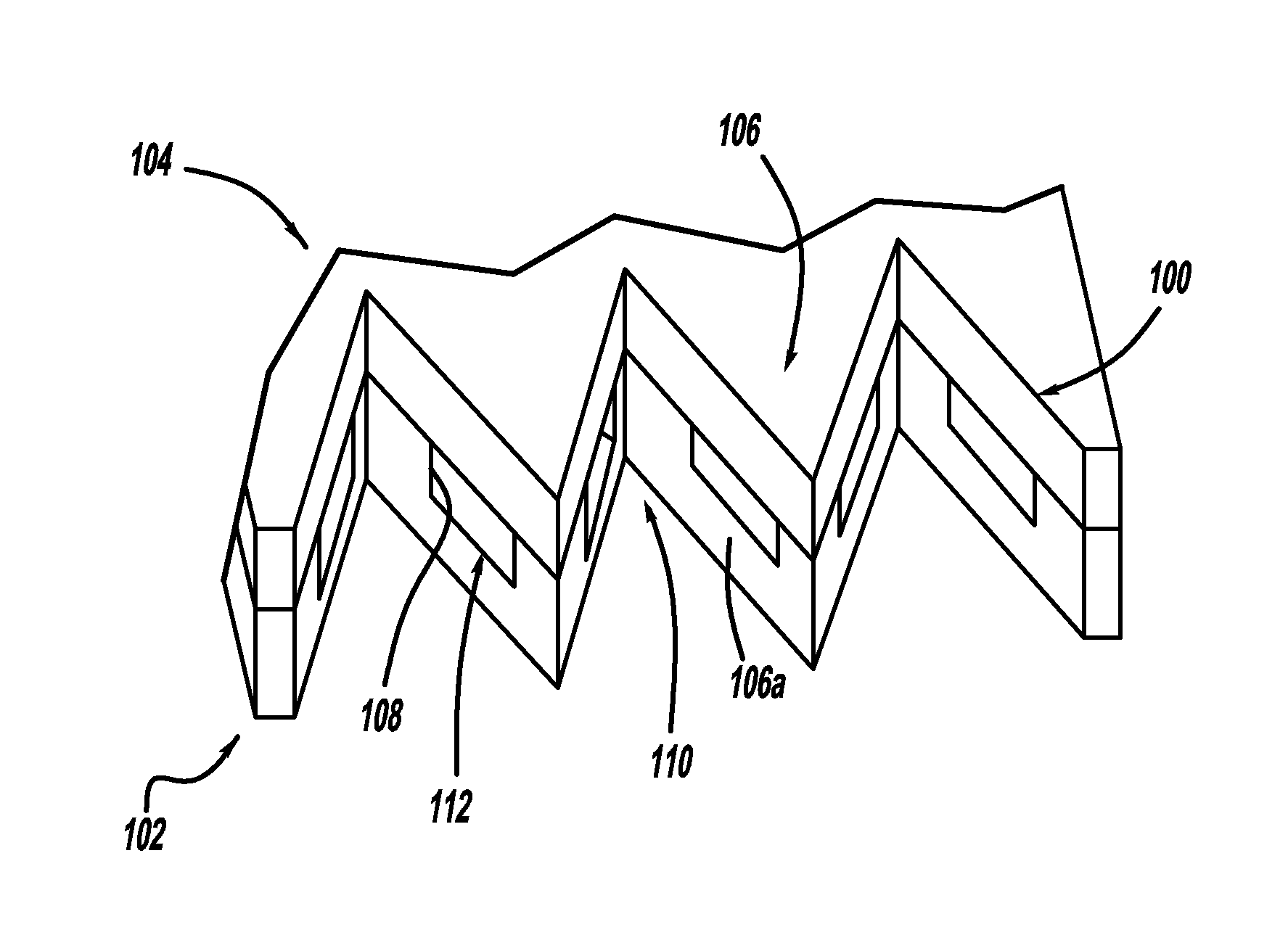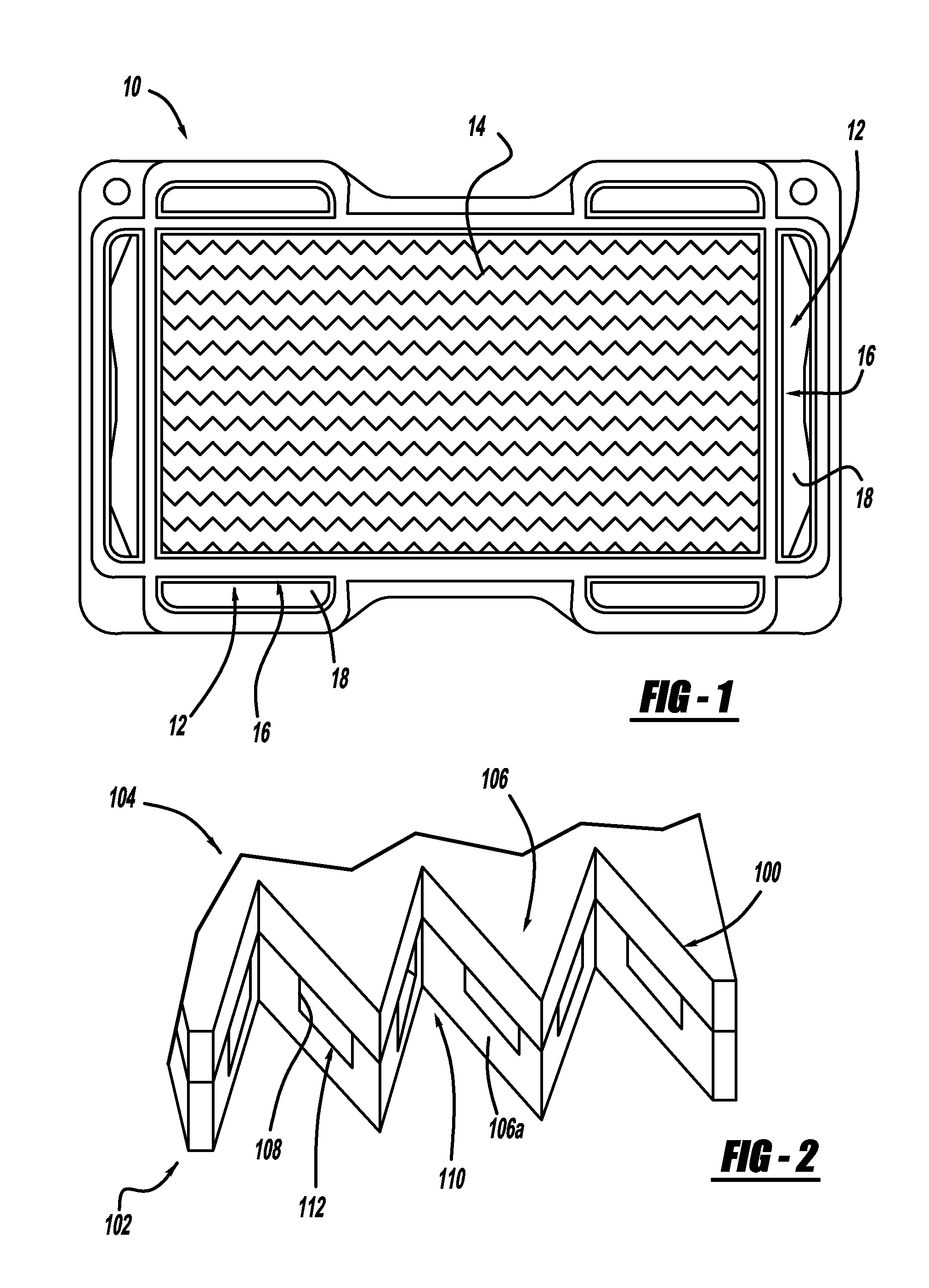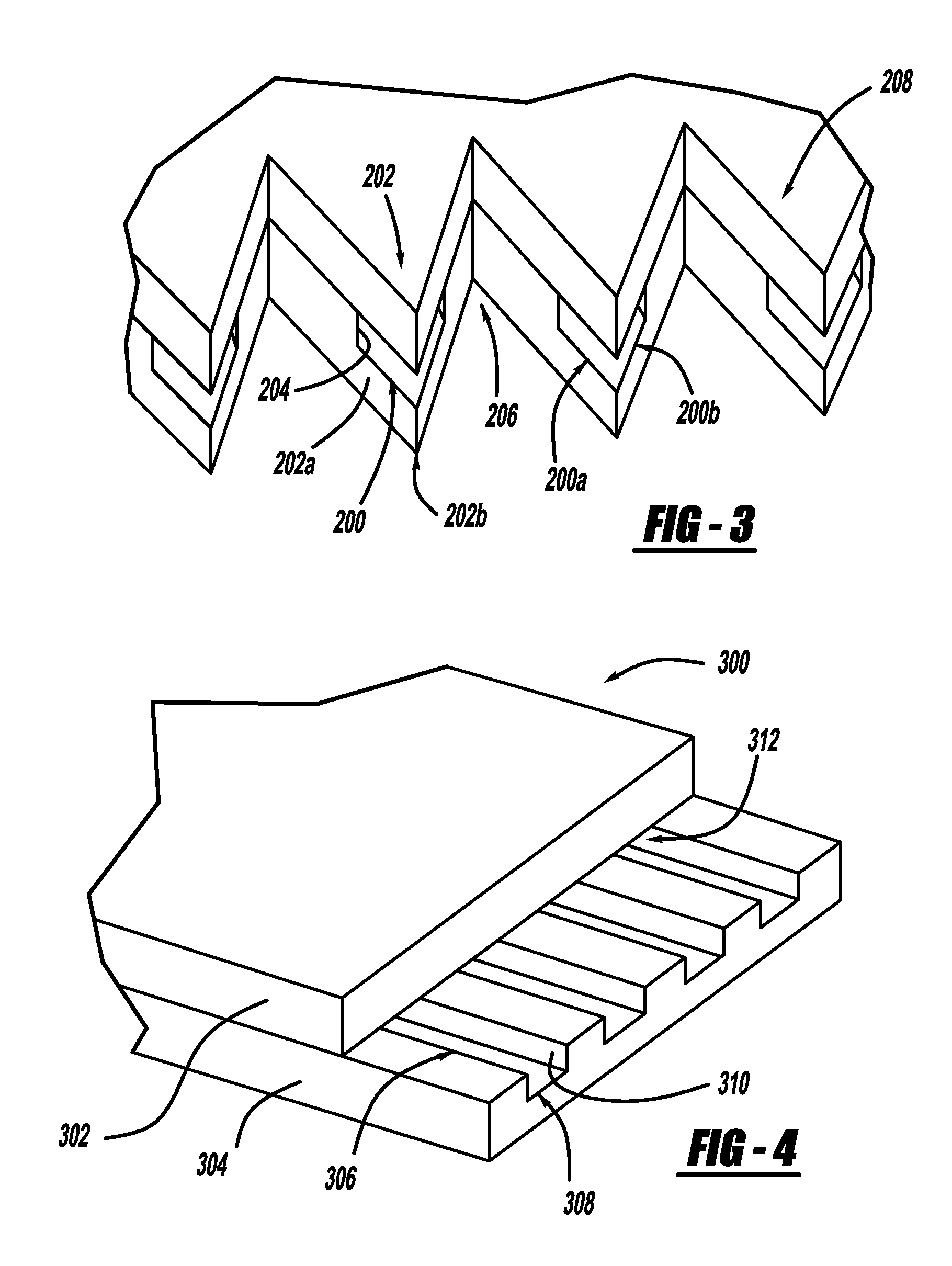Water removal features for PEMfc stack manifolds
a technology of stack manifolds and features, applied in the field of fuel cell stack water removal systems, can solve the problems of stack operation instability, performance degradation, and high cost of catalysts and precious metals, and achieve the effects of improving performance, improving efficiency, and improving stability
- Summary
- Abstract
- Description
- Claims
- Application Information
AI Technical Summary
Benefits of technology
Problems solved by technology
Method used
Image
Examples
Embodiment Construction
[0018]The following description of the preferred embodiment(s) is merely exemplary in nature and is in no way intended to limit the invention, its application, or uses.
[0019]In accordance with the general teachings of the present invention, liquid water films can be moved away from the openings of the reactant channels by using capillary forces generated by certain geometric features incorporated into the bipolar plate assembly. It should be appreciated that the present invention can be practiced with stamped metallic bipolar plates as well as composite plastic bipolar plates, including those in stacked configurations. The bipolar plates of the present invention are especially useful in conjunction with fuel cells, such as but not limited to PEM fuel cells.
[0020]Referring to FIG. 1, there is shown a bipolar plate generally at 10, in accordance with the general teachings of the present invention. More specifically, the relative location of the ends 12 of the reactant outlet channels ...
PUM
| Property | Measurement | Unit |
|---|---|---|
| capillary forces | aaaaa | aaaaa |
| length | aaaaa | aaaaa |
| hydrophilic | aaaaa | aaaaa |
Abstract
Description
Claims
Application Information
 Login to View More
Login to View More - R&D
- Intellectual Property
- Life Sciences
- Materials
- Tech Scout
- Unparalleled Data Quality
- Higher Quality Content
- 60% Fewer Hallucinations
Browse by: Latest US Patents, China's latest patents, Technical Efficacy Thesaurus, Application Domain, Technology Topic, Popular Technical Reports.
© 2025 PatSnap. All rights reserved.Legal|Privacy policy|Modern Slavery Act Transparency Statement|Sitemap|About US| Contact US: help@patsnap.com



